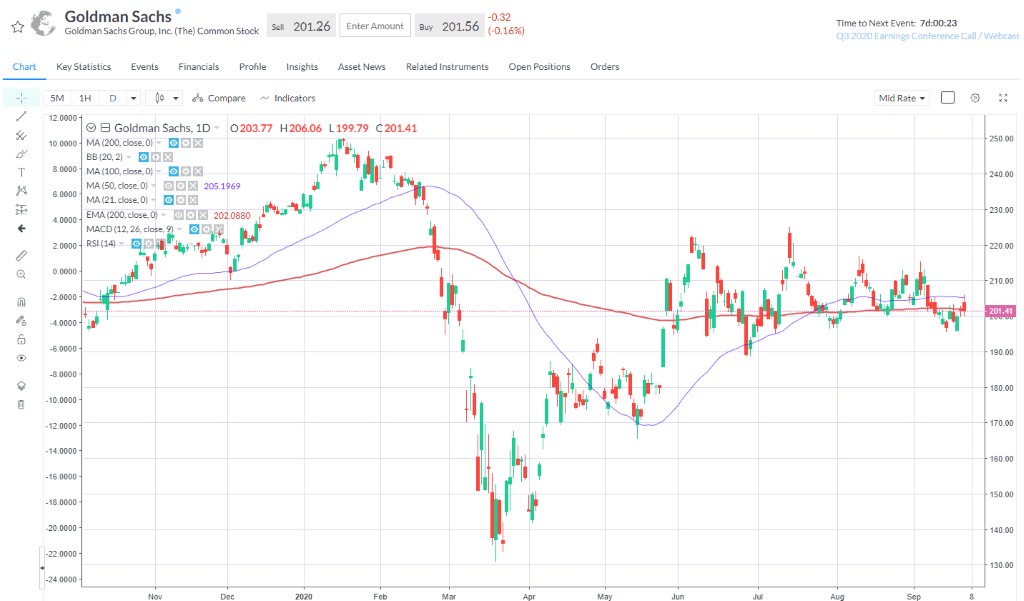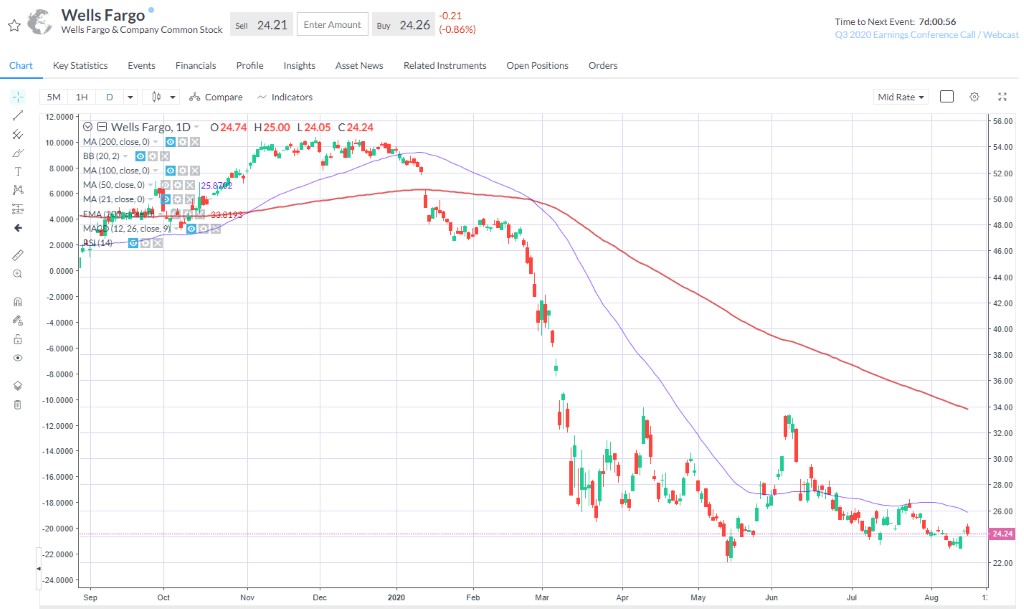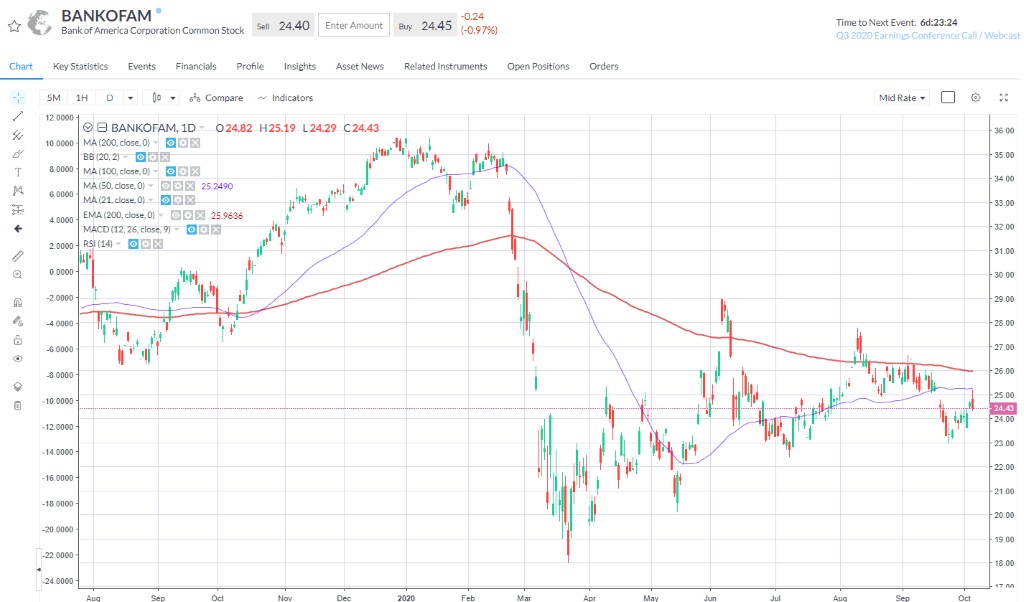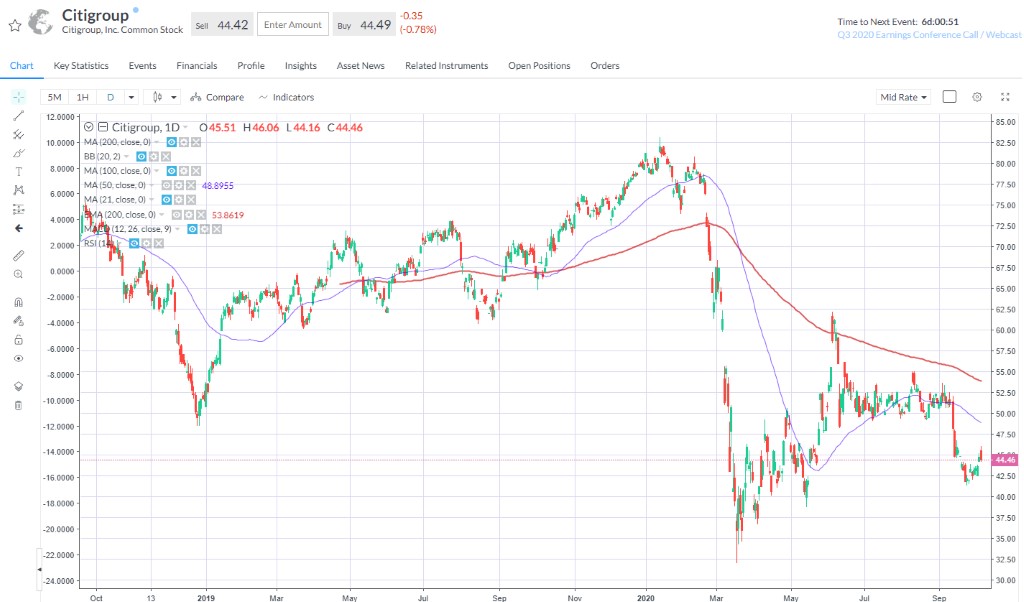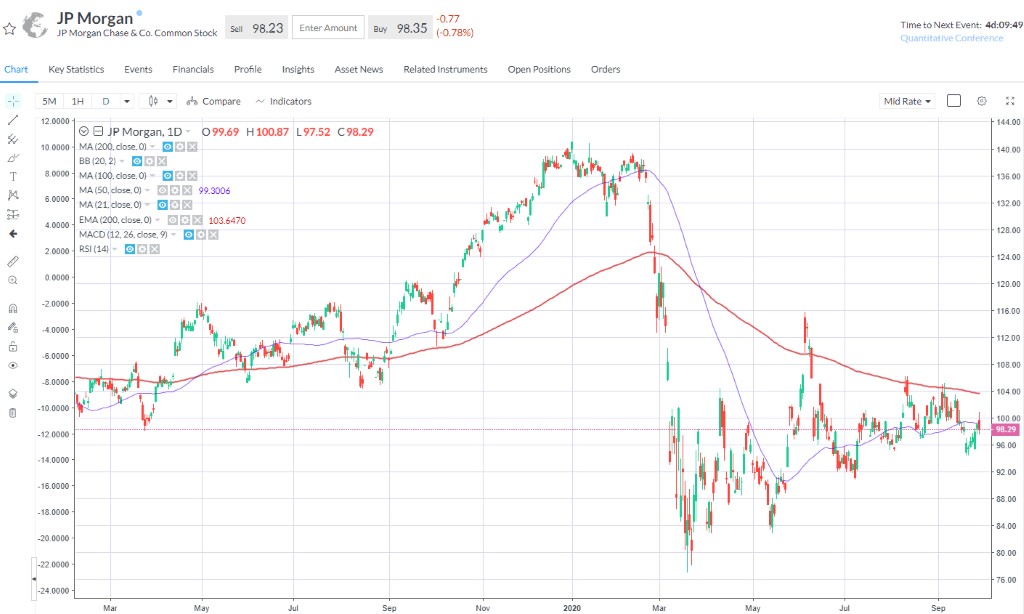
Wednesday Oct 7 2020 13:51

10 min
The S&P 500 rose 8.5% to 3,363 over the third quarter, having hit an all-time of 3580 at the start of September, with an intraday peak at 3588. The market faced ongoing headwinds from the pandemic, but risk sentiment remained well supported through the quarter by fiscal and monetary policy.
A pullback in September erased the August rally but was largely seen as a necessary correction after an over-exuberant period of speculation and ‘hot’ money into a narrow range of stocks.
Q3 earnings come at important crossroads: Expectations for when any stimulus package will be agreed – and how big it should be – continue to drive a lot of the near-term price action, though the market has largely held its 3200-3400 range.
Elevated volatility is also expected around the Nov 3rd election. But next week we turn to earnings and the more mundane assessment of whether companies are actually making any money.
Financials are in focus first: Citigroup and JPMorgan kick off the season formally on October 13th with Bank of America, Goldman Sachs and Wells Fargo on the 14th. Morgan Stanley reports on Oct 15th, In Q2, the big banks reported broadly similar trends with big increases in loan loss provisions offset by some stunning trading earnings.
Wall Street beasts – JPM, Goldman Sachs, Citi, Morgan Stanley and Bank of America – posted near-record trading revenues in the second quarter with revenues for the five combined topping $33bn, the best in a decade. At the time, we argued that investors need to ask whether the exceptional trading revenues are all that sustainable, and whether there needs to be a much larger increase for bad debt provisions.
Meanwhile, whilst the broad economic outlook has not deteriorated over the quarter, it has become clear that the recovery will be slower than it first appeared. Moreover, during Q3 the Fed announced a shift to average inflation targeting that implies interest rates will be on the floor for many years to come, so there is little prospect of any relief for compressed net interest margins.
Meanwhile there is growing evidence of a real problem in the commercial mortgage-backed securities (CMBS) market as new appraisals are seeing large swatches of real estate being marked down, particularly in the hotels and retail sectors.
At the same time, the energy sector has gone through a significant restructuring as we have seen North American oil and gas chapter 11 filings gathering pace through the summer as energy prices remained low. There is a tonne of debt maturing next year but how much will be repaid?
JPMorgan beat on the top and bottom line. Revenues topped $33.8bn vs the $30.5bn expected, whilst earnings per share hit $1.38 vs $1.01 expected. The range of estimates was vast, so the consensus numbers were always going to be a little out.
The bank earned $4.7bn of net income in the second quarter despite building $8.9 billion of credit reserves thanks to its highest-ever quarterly revenue. Loan loss provisions were $10.5bn, which was more than expected and the quarter included almost $9bn in reserve builds largely due to Covid-19.
The consumer bank reported a net loss of $176 million, compared with net income of $4.2 billion in the prior year, predominantly driven by reserve builds. Net revenue was $12.2 billion, down 9%. Credit card sales were 23% lower, with average loans down 7%, while deposits rose 20% as consumers deleveraged.
The provision for credit losses in the consumer bank was $5.8 billion, up $4.7 billion from the prior year driven by reserve builds, chiefly in credit cards.
Trading revenues were phenomenal, rising 80% with fixed income revenues doubling. Return on equity (ROE) rose to 7% from 4% in Q1 but was still well down on the 16% a year before. ROTE rose to 9% from 5% in the prior quarter but was down from 20% a year before.
Citigroup EPS beat at $0.50 vs the $0.28 expected. Trading revenues in fixed income rose 68%, and made up the majority of the $6.9bn in Markets and Securities Services revenues, which rose 48%. Equity trading revenue dipped 3% to $770 million. Consumer banking revenues fell 10% to $7.34 billion, while net credit losses, jumped 12% year over year to $2.2 billion. Net income was down 73% year-on-year.
Since then the bank has offloaded its retail options market making business, leaving Morgan Stanley (reporting Oct 15th) as the major player left in this market. We await to see what kind of impact the explosion in options trading witnessed over the summer had on both. ROE stood at just 2.4% and ROTE at 2.9%.
Wells Fargo – which does not have the investment banking arm to lean on – increased credit loss provisions in the quarter to $9.5bn from $4bn in Q1, vs expectations of about $5bn. WFG reported a $2.4 billion loss for the quarter as revenues fell 17.6% year-on-year.
CEO Charlie Scharf was not mincing his words: “We are extremely disappointed in both our second quarter results and our intent to reduce our dividend. Our view of the length and severity of the economic downturn has deteriorated considerably from the assumptions used last quarter, which drove the $8.4 billion addition to our credit loss reserve in the second quarter.”
Bank of America reported earnings of $3.5 billion, with EPS of $0.37 ahead of the $0.27 expected on revenues of $22bn. Its bond trading revenue rose 50% to $3.2 billion, whilst equities trading revenue climbed 7% to $1.2 billion. But the bank increased reserves for credit losses by $4 billion and suffered an 11% decline in interest income.
Return on equity (ROE) fell to 5.44% from 5.91% in the prior quarter and was down significantly from last year’s Q2 11.62%. Return on tangible equity (ROTE) slipped to 7.63% from 8.32% in Q1 2020 and from 16.24% in Q2 2019.
Morgan Stanley was probably the winner from Q2 as it reported net revenues of $13.4 billion for the second quarter compared with $10.2 billion a year ago. Net income hit $3.2 billion, or $1.96 per diluted share, compared with net income of $2.2 billion, or $1.23, for the same period a year ago.
Wealth Management delivered a pre-tax income of $1.1 billion with a pre-tax margin of 24.4%. Investment banking rose 39%, with Sales and Trading revenues up 68%. MS managed to increase its ROE to 15.7%, and the ROTE to 17.8% from respectively 11.2% and 12.8% in Q2 2019.
Goldman Sachs reported net revenues of $13.30 billion and net earnings of $2.42 billion for the second quarter. EPS of $6.26 destroyed estimates for $3.78. Bond trading revenue rose by almost 150% to $4.24 billion, whilst equities trading revenue was up 46% to $2.94 billion. ROE came in at 11.1% and ROTE at 11.8%.
(source: Markets.com)
| Bank | Forecast Revenues (no of estimates)
|
Forecast EPS (no of estimates)
|
| BOA | $20.8bn (8) | $0.5 (23) |
| GS | $9.1bn (15) | $5 (21) |
| WFG | $17.9bn (17) | $0.4 (24) |
| JPM | $28bn (19) | $2.1 (23) |
| MS | $10.4bn (15) | $1.2 (20) |
| C | $18.5bn (17) | $2 (21) |
None have really managed to match the recovery in the broad market but valuations are compelling.
